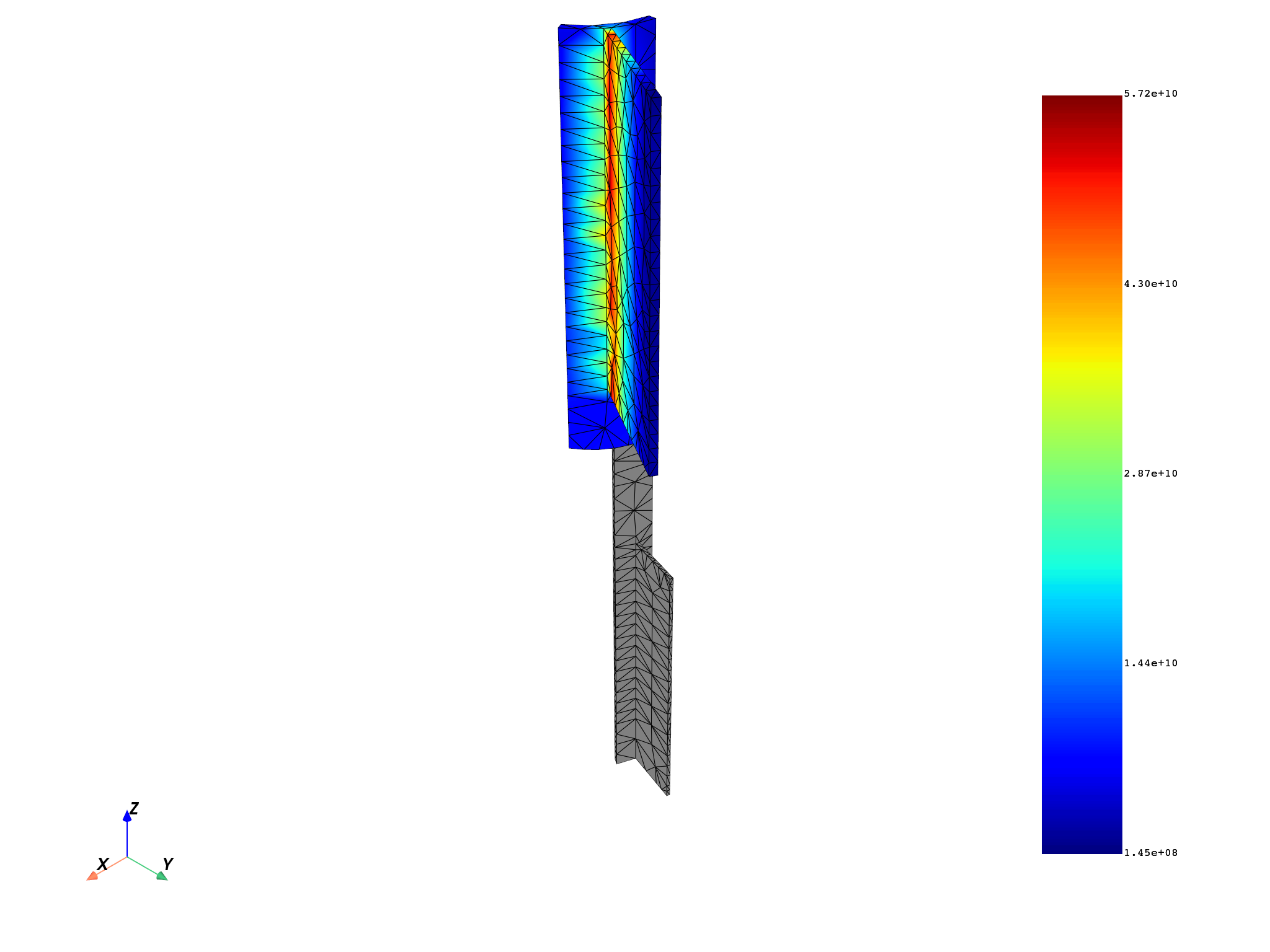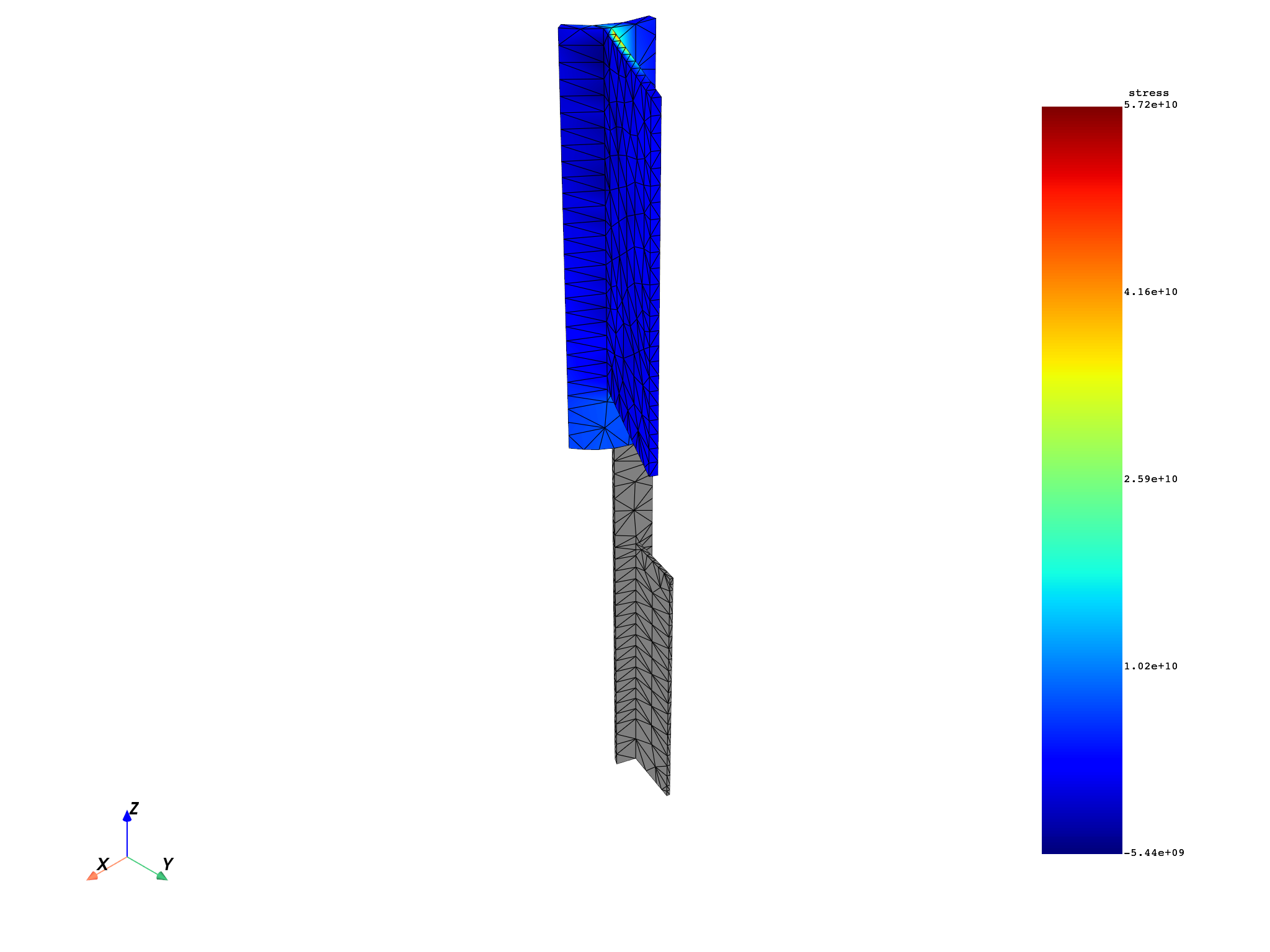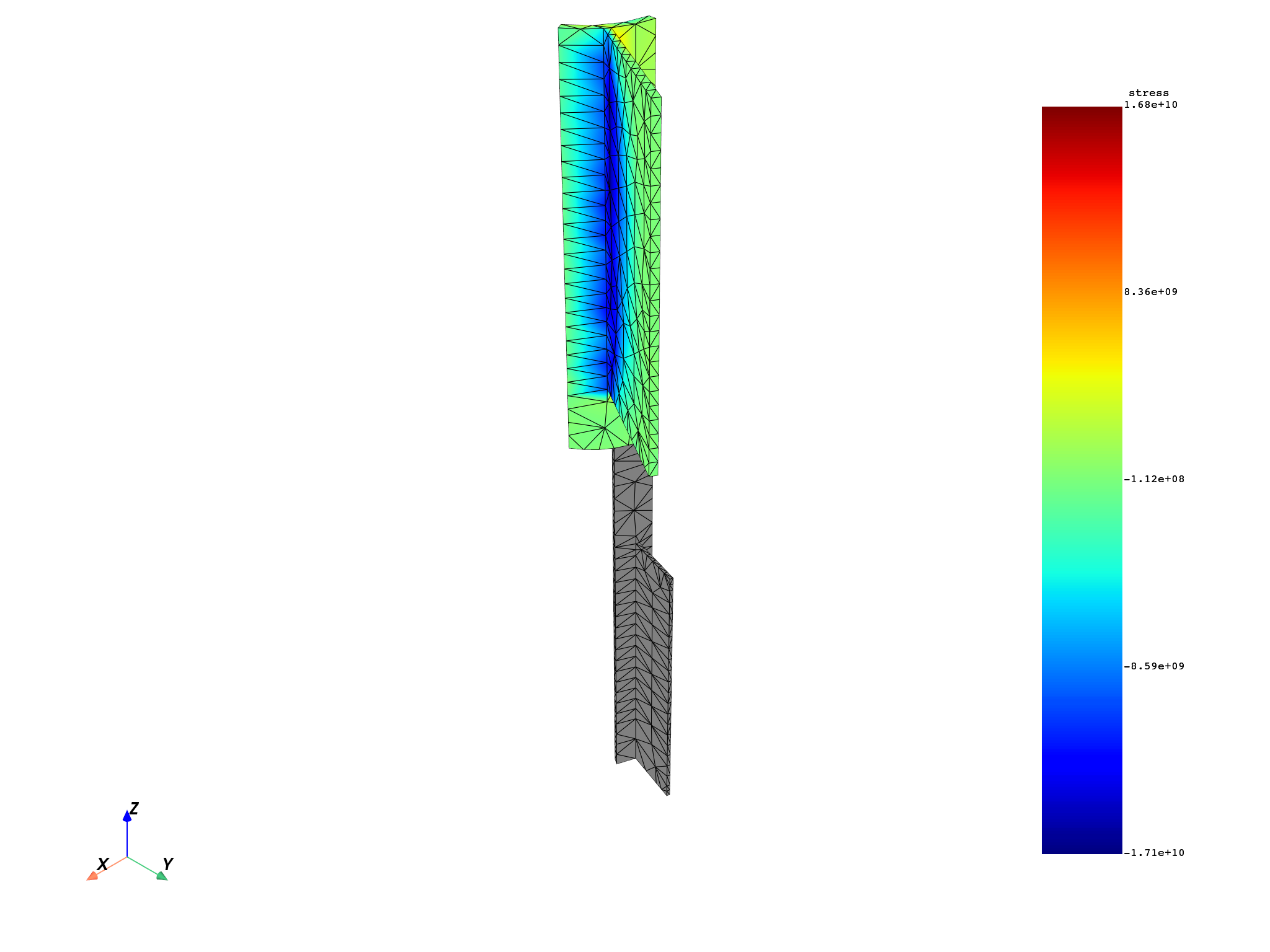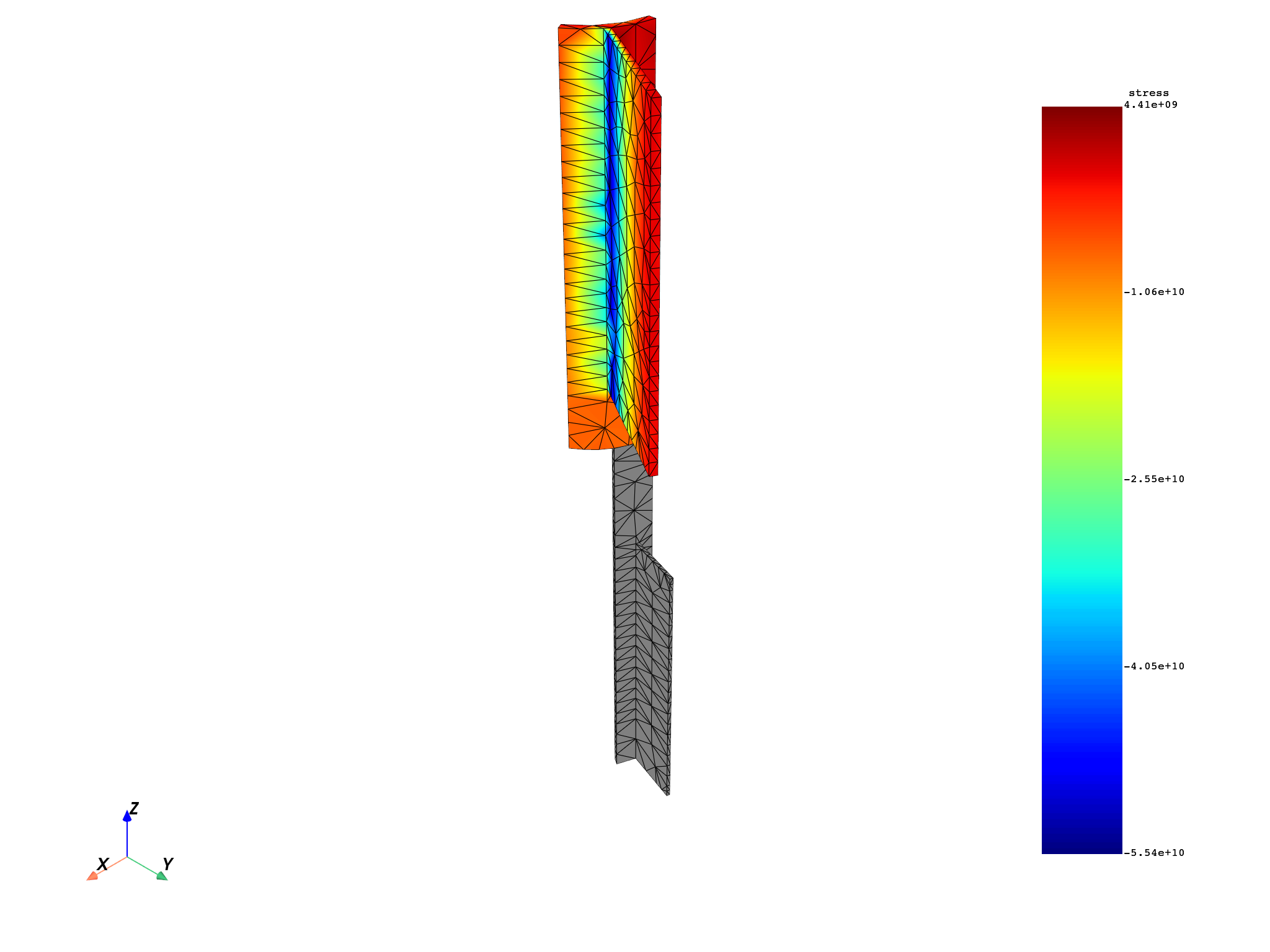Note
Go to the end to download the full example code.
Bring a field’s data locally to improve performance#
Reducing the number of calls to the server is key to improving
performance. Using the as_local_field option brings the data
from the server to your local machine where you can work on it.
When finished, you send the updated data back to the server
in one transaction.
# Import necessary modules
from ansys.dpf import core as dpf
from ansys.dpf.core import examples
from ansys.dpf.core import operators as ops
Create a model object to establish a connection with an example result file and then extract:
model = dpf.Model(examples.download_multi_stage_cyclic_result())
print(model)
mesh = model.metadata.meshed_region
DPF Model
------------------------------
Modal analysis
Unit system: MKS: m, kg, N, s, V, A, degC
Physics Type: Mechanical
Available results:
- displacement: Nodal Displacement
- stress: ElementalNodal Stress
- elastic_strain: ElementalNodal Strain
- structural_temperature: ElementalNodal Temperature
------------------------------
DPF Meshed Region:
3595 nodes
1557 elements
Unit: m
With solid (3D) elements
------------------------------
DPF Time/Freq Support:
Number of sets: 6
Cumulative Frequency (Hz) LoadStep Substep Harmonic index
1 188.385357 1 1 0.000000
2 325.126418 1 2 0.000000
3 595.320548 1 3 0.000000
4 638.189511 1 4 0.000000
5 775.669703 1 5 0.000000
6 928.278013 1 6 0.000000
Create the workflow#
Compute the stress principal invariants:
stress_op = ops.result.stress(data_sources=model.metadata.data_sources)
stress_op.inputs.requested_location.connect(dpf.locations.nodal)
stress_op.inputs.mesh_scoping.connect(mesh.nodes.scoping)
principal_op = ops.invariant.principal_invariants_fc(stress_op)
principal_stress_1 = principal_op.outputs.fields_eig_1()[0]
principal_stress_2 = principal_op.outputs.fields_eig_2()[0]
principal_stress_3 = principal_op.outputs.fields_eig_3()[0]
Manipulate data locally#
This example goes over the fields, keeping the largest invariant value by node if the averaged value of invariants is large enough. Exploring data allows you to customize it to meet your needs.
node_scoping_ids = principal_stress_1.scoping.ids
threshold = 300000.0
field_to_keep = dpf.fields_factory.create_scalar_field(
len(node_scoping_ids), location=dpf.locations.nodal
)
with field_to_keep.as_local_field() as f:
with principal_stress_1.as_local_field() as s1:
with principal_stress_2.as_local_field() as s2:
with principal_stress_3.as_local_field() as s3:
for i, id in enumerate(node_scoping_ids):
d1 = abs(s1.get_entity_data_by_id(id))
d2 = abs(s2.get_entity_data_by_id(id))
d3 = abs(s3.get_entity_data_by_id(id))
if (d1 + d2 + d3) / 3.0 > threshold:
d = max(d1, d2, d3)
f.append(d, id)
Plot result field#
Plot the result field on the skin mesh:
mesh.plot(field_to_keep)

Plot initial invariants#
Plot the initial invariants:
mesh.plot(principal_stress_1)
mesh.plot(principal_stress_2)
mesh.plot(principal_stress_3)
Total running time of the script: (0 minutes 9.329 seconds)


